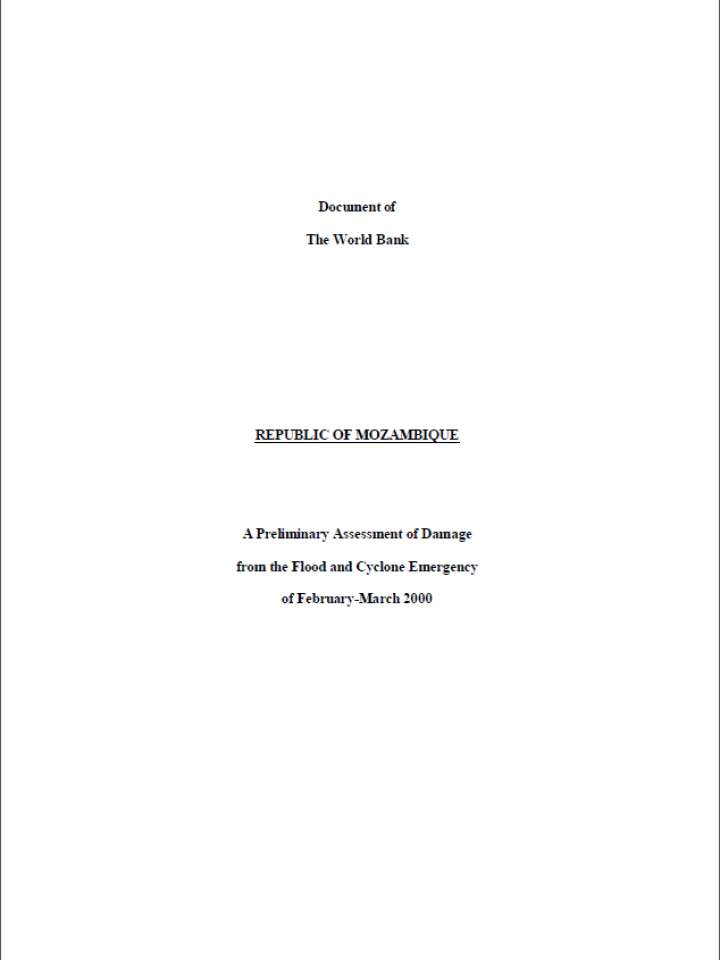Mozambique: a preliminary assessment of damage from the flood and cyclone emergency of February-March 2000
From February 4 to 7, 2000, due to the effects of cyclone Connie, Maputo city received 455 mm of rainfall, or nearly half the average annual total. Similar exceptionally heavy rains across southern Mozambique exacerbated normal seasonal flooding, inundating low-lying areas. From February 20 to 22, heavy rainfall associated with cyclone Eline boosted rainfall totals in neighboring South Africa, Zimbabwe and Swaziland, filling reservoirs on river basins draining through southern Mozambique and triggering more extensive flooding, particularly along the Limpopo, Incomati and Umbeluzi rivers. It was the first time in recorded memory that all three river systems flooded at the same time in Mozambique.
This document is a World Bank contribution to the Core Group of Mozambique’s external partners convened by the Government of Mozambique to assist in the response to the flood and cyclone emergency of February -March 2000. The document attempts to assess the cost of these damages to the Mozambican economy, both at the sectoral level and overall. At this early stage, damage estimates are necessarily tentative, preliminary and subject to revision, not least because rainfall and river levels remain in flux and the emergency period is not yet past.
From March 12 to 24, 2000, a World Bank team traveled to Mozambique to assess the flood and cyclone damage sustained in the country following heavy rins in February and March. Together with members of other agencies in the Core Group, and in close consultation with the Government and the wider development partnership in Mozambique, the team attempted to assess the impact of the damage, in each sector and on the economy as a whole, and to identify priorities for rehabilitation. This document sets out the team’s findings.
